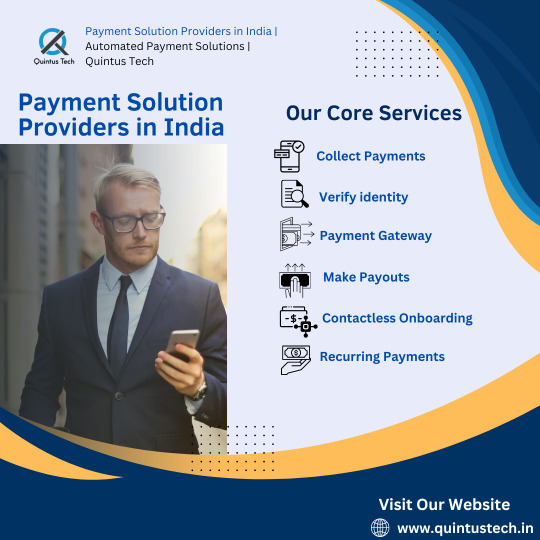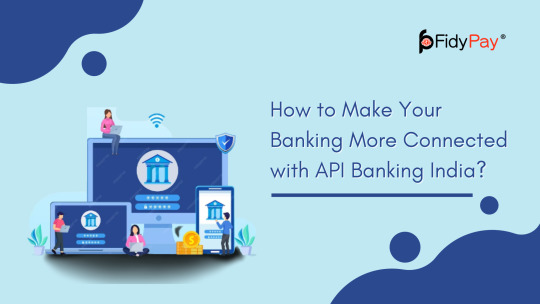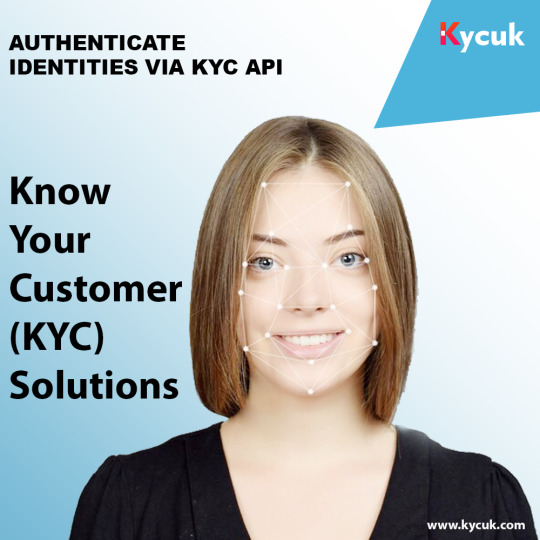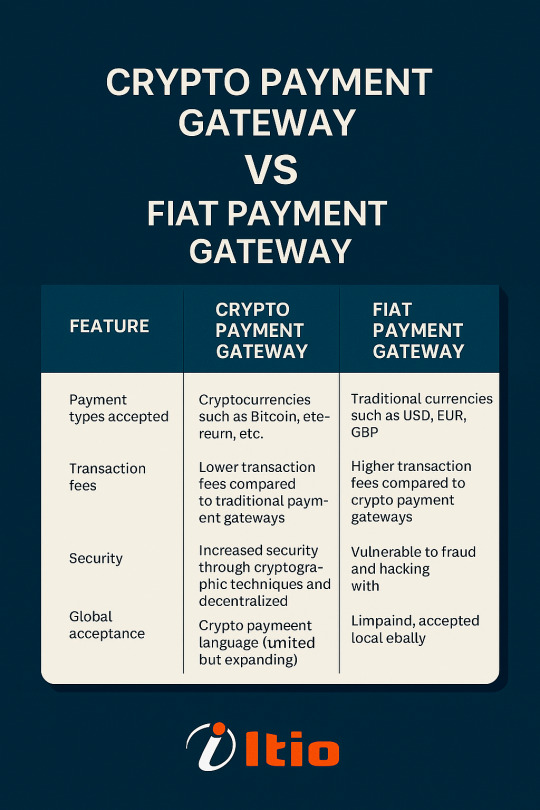#api banking solutions
Explore tagged Tumblr posts
Text
#API Banking India#Connected Banking#bank api provider#banking api provider#banking api provider india#banking api providers india#banking api providers#api banking solutions company#banking api india#open banking api india#api banking india#open banking api providers#api banking solutions#open banking in india#api banking platform#api banking#api service provider#api banking services#open banking api#open banking api platform
0 notes
Text
#background checks#fraud prevention#identity verification solutions#KYC API#kyc solution#kyc uk#fintech#banks#finance#identity verification system
3 notes
·
View notes
Text

Payments, simplified. Our Smart Collect and QR Code solutions make transactions effortless and secure. Ready to streamline your business? #Fintech #Payments #ITIOInnovex
#crypto#cybersecurity#digital banking licenses#fintech#investors#white label crypto exchange software#digitalbanking#bitcoin#digital marketing#financial advisor#paymentgateway#payment solutions#payment processing#payment gateway#payments#payment processor#payment api#payment plan#itioinnovex#scans#qr code#qr payment
1 note
·
View note
Text
InStep Technologies is a trusted fintech software development company delivering secure, scalable, and innovative financial solutions. We build custom fintech apps, APIs, mobile wallets, blockchain integrations, and automation tools for startups, banks, and enterprises.
#fintech software development#custom fintech solutions#financial technology apps#fintech development company#banking app development#blockchain in finance#secure payment software#finance automation tools#investment software solutions#fintech API integration
0 notes
Text
SMS API for Appointment Scheduling: Enhancing Efficiency in Service-Based Businesses
Text messages can be a simple yet powerful way to get your small business right in front of the customers, literally in the palm of their hands. SMS Gateway Integration can allow you to connect with your target audience effectively, boost your open rates, and gather real-time data. Only 5% of calls are answered, and people skip voicemail, so calling to set and confirm appointments doesn’t work as you want.
0 notes
Text
AU Bank API Integration by Infinity Webinfo Pvt Ltd

In the rapidly evolving digital landscape, seamless financial transactions and real-time banking services are becoming the cornerstone of user satisfaction. To address this need, Infinity Webinfo Pvt Ltd offers reliable and efficient AU Bank API Integration services, empowering businesses to enhance their fintech operations and deliver secure, automated banking experiences.
What is AU Bank API Integration?
AU Bank API Integration allows businesses and developers to connect directly with AU Small Finance Bank’s digital infrastructure. This integration provides secure access to various banking services like account verification, fund transfers, transaction history, balance inquiries, and more — all through programmable APIs.
Key Features of AU Bank APIs
Instant Account Validation
NEFT/IMPS/RTGS Transactions
Real-Time Balance Checks
Mini Statement and Transaction Logs
Secure and Compliant Interfaces
These APIs are ideal for fintech startups, NBFCs, digital wallets, and platforms looking to streamline their financial operations with trusted banking systems.
Why Choose Infinity Webinfo Pvt Ltd for API Integration?
As a leading provider of digital solutions, Infinity Webinfo Pvt Ltd has carved a niche in Bank API Integration services. With a proven track record and a team of experienced developers, they ensure:
Quick Implementation
Secure Data Handling
Custom API Workflows
End-to-End Support & Maintenance
Scalable Architecture
Their expertise not only lies in connecting your platform with AU Bank’s APIs, but also in optimizing the flow to suit your business model — whether you’re managing B2C payments, bulk disbursements, or internal accounting automation.
Features & Benefits
Businesses that integrate AU Bank APIs through Infinity Webinfo Pvt Ltd enjoy several operational advantages, including:
End-to-End Automation of the Process Automated workflows ensure better turn-around time for transactions as both initiation and reverse status updates are available in real time on the customer's system.
Encryption-Based Transactions Transactions are executed through highly secured, encryption-based data transmission, ensuring data privacy and regulatory compliance.
Better Fund Management With real-time integration, there’s minimal delay between financial decision-making and execution, leading to improved liquidity and fund utilization.
Ease in Reconciliation Automated updates and system integration enable smoother reconciliation of payments and collections within the bank account, saving manual effort and reducing errors.
Use Cases for AU Bank API Integration
Loan disbursement platforms
Recharge & utility apps
Micro-finance portals
Ecommerce platforms for instant refunds
Payment aggregators and fintech platforms
Conclusion
For businesses aiming to leverage secure and efficient banking services through digital channels, AU Bank API Integration is a smart choice. With Infinity Webinfo Pvt Ltd at the helm of your API integration needs, you can rest assured that you’re in expert hands. From setup to support, they deliver comprehensive solutions that accelerate your fintech capabilities and business growth.
📩 Contact us today to schedule a free consultation and take your travel business to the next level.
WhatsApp: +91 9711090237
#api integration#infinity webinfo pvt ltd#travel portal development#travel portal company#travel portal solutions#payment gateway api integration#AU BANK API Integration#API Integration Services#Travel Website development#Travel Website development services
0 notes
Text
#KYC in Banking#KYC Solutions in Canada#KYC Solutions Provider in Canada#KYC Canada#KYC solutions#KYC company#KYC providers#kyc solution#kyc software#kyc api#banks#business
1 note
·
View note
Text
UPI Payment Gateway India
Empower Your Transactions with Quintus Tech: Leading Automated Payment Solution Provider in India. Discover seamless payment solutions in India with Quintus Tech – your trusted automated payment solution provider. Streamline transactions effortlessly Quintus Tech offers cutting-edge and seamless payment solutions in India, serving as your trusted automated payment solution provider. Our goal is to simplify and streamline transactions, making the payment process effortless for businesses and individuals alike. Automation, Security, User-Friendly Interface, Versatility, Integration, Customer Support, Innovation etc. Visit Our Website :- https://quintustech.in/
#Payment Solution Providers in India#Automated Payment Solutions#Quintus Tech#UPI Payment Gateway#White Label Development#Bank Account Verification API#Digital Client Onboarding#Dynamic UPI QR Code Generator#Virtual Bank Account for Business#Recurring Online Transactions
0 notes
Text
UPI payment gateway in India
Quintus Tech provides a wide range of services including automated payment solutions in India and digital payment systems, mobile payment solutions, and UPI payment gateways. They enable businesses to easily and securely accept customer payments, settle transactions, and improve customer experience.

#Payment Solution Providers in India#Automated Payment Solutions#Quintus Tech#UPI Payment Gateway#White Label Development#Bank Account Verification API#Digital Client Onboarding#Dynamic UPI QR Code Generator#Virtual Bank Account for Business
0 notes
Text

SignalCLI: The Kafkaesque Journey of Being Real on Social Media
I belong to the generation where, when someone asked, “Hey, I need an account on Facebook for development”, five minutes later — after a quick chuckle at the request to provide a “real name” (seriously, who in their right mind gives REAL details to some random third-party website? I barely trust my bank, let alone an online platform) — an account under John or Jane Doe was all set. We’d test APIs, update profiles, mess around with friend lists, curse outdated documentation, and wonder why nothing worked as expected.
Fast forward to 2025. Real people. Real struggles.
Facebook Struggles
“Hey Sophie (our spokesperson/marketing director, lovely, amazing, single lady in her late 20s — sorry, she’s just awesome), we need a PR release, like, NOW. We’re going live soon; let the world know.”
“Yes boss,” Sophie said cheerfully, and her journey began.
For our PR release, we needed:
Company name: Check, easy.
Company address: Reluctantly provided.
Contact details: Real emails, manageable.
Social media presence: This is where it all went sideways.
We had none. Zip. Nada. Not on Facebook, Twitter, Instagram, TikTok — nowhere.
Sophie, being the vibrant, attractive lady she is, naturally has personal social media filled with delightful videos and photos — like her 5 AM salmon-fishing trip in eye-catching lingerie (birthday trips, naturally), or karaoke nights after five straight tequila shots. You get the drill. Awesome personal stuff. Stunning photos. Absolutely NOT crypto-business-appropriate. So, creating a proper business Facebook profile was the logical step.
Sophie registered using her professional email. Facebook immediately halted the process: “Human verification required.” Sophie complied, recording a video selfie. Fifteen minutes later: “Your account violates community standards.” How exactly an empty account with a genuine video selfie violates community standards still baffles me.
Undeterred, Sophie used our business phone number instead. Boom! Account created successfully. Yet, when trying to create a business page — errors everywhere. Technical issues galore. VPN trials, different browsers, modes, and repeated attempts later, Facebook temporarily shadow-banned us for “too many attempts.”
Next day, verification required again. Another video selfie. Another ban. For absolutely no reason. Genuine person, genuine video — banned.
Facebook — absolute fail.
LinkedIn Struggles
Next stop: LinkedIn. Our team member spent days meticulously crafting his profile. Day four: LinkedIn requested a passport scan for “verification.” He complied, foolishly. LinkedIn replied, “You don’t exist. Provide a passport proving your existence.” Since when did social media earn the right to demand personal documentation?
LinkedIn — epic fail.
X.com (Twitter) Struggles
Then came X.com. Initially felt like fresh air — quick account setup, seamless posting, and fast PR release. THANK YOU, X.COM!
However, still a few issues: shadow-banned because our account was new, ads repeatedly rejected despite charging our company credit card. Turns out, running crypto signals ads requires a banking license. Seriously?
Yet, compared to Facebook and LinkedIn, X.com felt like paradise. So again, thanks to X.com, we have a social presence. PR released, Case closed, much appreciated.
Conclusion
Despite challenges, we got there. Find us at x.com/signalCLI. Small catch: if you’d like to check our latest posts, please click “highlights.” There’s hope that eventually our posts will appear normally. But hey, does it fulfill the requirement of “social media presence”? Yes, CHECK! Thank you! Next challenge!
But then I began to wonder — are there workarounds for these issues? What do normal people do? Surely, we’re not alone? And guess what? There are solutions.
Extensive research revealed that fully operational Facebook, Instagram, LinkedIn, and X.com accounts (and any other platform you may want) can easily be bought online. Not even on the dark web — official websites with official links. You can even use your credit card for the purchase. Stunning, right?
Prices range from just a few cents up to about a dollar fifty, with tens and hundreds of thousands available. No verification videos, no passports requested — just simple, instant transactions. Instant access.
Yet, our genuine spokesperson Sophie Caldwell, whom I have the pleasure of seeing whenever I’m in the office, officially “doesn’t exist” according to Facebook. My friend, with over two decades of experience, who spent three days meticulously setting up his account — officially “doesn’t exist.” But people sending inappropriate pictures to minors? They’re fine — and if banned, they simply buy another account and continue.
I somewhat understand that if you’re involved in platform management (IT? Management? Who knows?) at Facebook, extra cash might seem appealing. Selling accounts might even be considered a lucrative side hustle. Many people struggle, just like we did. Many want an account, just like we did. While we, as a company, cannot ethically purchase an account (reputation matters), ordinary people might. Sell 1,000 accounts at a dollar each, make $700 easily after a 30% commission. Not bad.
But my primary issue isn’t even with accounts being sold; business is business. My issue is why we must verify anything with these social media giants. Why care if John Doe is my real name? If John Doe posts inappropriate content, that’s the appropriate agency’s problem, not Facebook’s. Yes, provide tools to report unsolicited content. Yes, maintain a self-managed community with the ability to escalate issues. But requesting legal documentation that could be misused to issue credit cards in my name? Are they insane?
Then we wonder, “How were my personal details stolen, resulting in unauthorized credit card use and selling my house?” Well, maybe — just maybe — it was because you willingly handed your personal details and documents to Facebook, LinkedIn, Instagram, and others. Common sense seems lost here.
Social media giants demanding passports, banking licenses, penalizing genuine efforts — it’s a bizarre reality. I wouldn’t be surprised if, in ten years, companies facing similar issues resort to buying social media accounts. Today we managed to open an account; tomorrow, who knows what social media platforms might demand?
Perhaps they have too much control. Perhaps there should be limits on collecting personal data, clearly defining their role in society. Call me crazy, but while governmental agencies knowing my identity might be tolerable (if uncomfortable), social media platforms demanding the same — is insane.
Today’s story isn’t directly about SignalCLI, crypto, or even IT. Besides, I left out the portion about why a PR hard requirement includes having social media presence. Excellent question, wouldn’t you say? Company name — makes sense. Address — a bit iffy, but maybe someone wants to send us a gift? Fine. Contact person — logical. Means of contact, like emails? Do these people realize that sharing emails isn’t far off from sharing passports? And that emails are a prime target for hackers looking to compromise a company? But social media presence? Why is this suddenly a mandatory requirement? What if, like us until recently, we simply didn’t have, need, or want an online social presence? People interested in contacting us have our contact page. Who exactly decided social media presence was mandatory? Who couldn’t imagine a company without one?
Anyway, thought you’d appreciate these stories from the trenches of a futures crypto signal company’s digital marketing division.
Stay sane out there!
More to come!
56 notes
·
View notes
Text
0 notes
Text
How to Make Your Banking More Connected with API Banking India?

The banking and financial services industry in India has evolved at a staggering pace within a short duration of time. One of the trusted and innovative breakthroughs in the banking industry right now is API Banking. What is the impact of API Banking India on the delivery of banking services?
The banking industry has to adapt to the emerging requirements of consumers alongside fighting against their competition for success. Interestingly, APIs have provided the opportunity for open banking, which would provide more personalized and seamless banking across different platforms. Let us learn more about how API banking works and its role in promoting connected or seamless banking.
Definition of API Banking
Before you find out how API Banking encourages connected banking, it is important to learn the fundamentals of APIs in banking. APIs or Application Programming Interfaces can help third-party applications use a specific interface for accessing a general set of services and tools. Subsequently, multiple businesses or platforms could use banking services alongside offering the same services to their customers.
In 2016, the Reserve Bank of India launched the Unified Payments Interface or UPI. It served as a major tool for enhancing the popularity of banking APIs. As a matter of fact, some of the top banks in India offer a broad assortment of API banking services in different categories. Third-party organizations and platforms could explore multiple ways of using banking APIs to their advantage.
How Can APIs Enable Connected Banking?
The answer to the question points to the flexibility for serving customers who live away from the branch or the ones who prefer online banking. As the demand for online banking gains momentum, it is reasonable to believe that API Banking India will grow in the future. More people have been using financial technology applications in response to the global pandemic in 2020 and its aftermath. Banking API integration on fintech apps has emerged as a promising solution for accessibility of banking services. Businesses in the banking industry could connect with fintech businesses and use technical tools to improve accessibility of their services.
APIs could enable connected banking as API services provide access to core banking data. As a result, APIs could help in removing barriers between businesses and ensuring that all of them can access the same data. Another important highlight which proves the capability of API banking for creating connected customer experiences is the integration of legacy systems with API banking. For example, an organization could integrate ERP systems with API banking for direct management of cash payables and receivables through their ERP.
Is API Banking the Future?
The growing adoption of API banking is a sign of a major transformation in the banking industry. As the world of banking embraces new technologies, API banking provides an easy way for businesses to access banking services. With a simple API, businesses could leverage banking services alongside offering the same to their customers. As a result, customers would not rely on different payment gateways, and they could complete financial transactions directly on the platform. Call FidyPay at 6232082424 to learn more about API banking and find the ideal solutions for creating a new generation of seamless banking experiences.
#API Banking India#COnnected Banking#api banking services#api platform#banking api india#open banking api india#open banking api providers#api banking solutions#open banking in india#api service provider#open banking api#open banking api platform#api open banking
0 notes
Text
KYC Provider UK
KYC Verification is essential to onboard a new client in UK businesses to authenticate the identity of a person associated with the business and even to check involvement in money laundering. We are one of the leading KYC providers in the UK and assist with KYC API for financial and non-financial businesses.

#KYC UK#KYC Provider UK#KYC Solutions UK#KYC Solutions Provider UK#banking#finance#fintech#gaming#kyc api#kyc software#kyc companies#banks
4 notes
·
View notes
Text

Looking for One, We got you!
#crypto#cybersecurity#digital banking licenses#fintech#investors#digitalbanking#white label crypto exchange software#bitcoin#digital marketing#financial advisor#itioinnovex#paymentgateway#payment processing#payment gateway#payment api#payment solutions#payments
0 notes
Text
SMS API for Appointment Scheduling: Enhancing Efficiency in Service-Based Businesses
Text messages can be a simple yet powerful way to get your small business right in front of the customers, literally in the palm of their hands. SMS Gateway Integration can allow you to connect with your target audience effectively, boost your open rates, and gather real-time data. Only 5% of calls are answered, and people skip voicemail, so calling to set and confirm appointments doesn’t work as you want. Scheduling messages are the common type of text requested by consumers. Texting takes just a moment, whether texting one person or 10,000 plus. It is a better way to save hours every day rather than calling everyone individually. SMS API business solution for banks The Covid-19 pandemic has reshaped the banking behavior of people across India. As social distancing became a norm, most customers preferred using digital banking and phone banking solutions rather than visiting the branch. This trend is expected to continue even after the pandemic. At Sinch, an SMS API business solution for banks enables secure, real-time communication with customers, facilitating services like transaction alerts, account notifications, two-factor authentication, and customer support. It's become a vital component of the modern banking sector. Top SMS API to send text messages Top SMS APIs for sending text messages include Sinch, known for its global reach and reliability, which offers versatile communication solutions like SMS and voice. One of the most common use cases for SMS text message marketing is to send sales promotions and discount codes to customers. As many people read text messages within three minutes of receiving them, SMS can be a great tool to send time-sensitive information. SMS API integration SMS API, or Short Message Service Application Programming Interface, bridges a business application and mobile network infrastructure. It lets enterprises automate their text messaging processes. Businesses use SMS API integration to send promotional offers, updates, appointment reminders, and more. SMS API integration can allow you to send personalized SMS at scale easily. You can include customized, interactive links embedded into your text messages that go beyond just greeting customers by name.
0 notes
Text
How to Develop a P2P Crypto Exchange and How Much Does It Cost?
With the rise of cryptocurrencies, Peer-to-Peer (P2P) crypto exchanges have become a popular choice for users who want to trade digital assets directly with others. These decentralized platforms offer a more secure, private, and cost-effective way to buy and sell cryptocurrencies. If you’re considering building your own P2P crypto exchange, this blog will guide you through the development process and give you an idea of how much it costs to create such a platform.
What is a P2P Crypto Exchange?
A P2P crypto exchange is a decentralized platform that allows users to buy and sell cryptocurrencies directly with each other without relying on a central authority. These exchanges connect buyers and sellers through listings, and transactions are often protected by escrow services to ensure fairness and security. P2P exchanges typically offer lower fees, more privacy, and a variety of payment methods, making them an attractive alternative to traditional centralized exchanges.
Steps to Develop a P2P Crypto Exchange
Developing a P2P crypto exchange involves several key steps. Here’s a breakdown of the process:
1. Define Your Business Model
Before starting the development, it’s important to define the business model of your P2P exchange. You’ll need to decide on key factors like:
Currency Support: Which cryptocurrencies will your exchange support (e.g., Bitcoin, Ethereum, stablecoins)?
Payment Methods: What types of payment methods will be allowed (bank transfer, PayPal, cash, etc.)?
Fees: Will you charge a flat fee per transaction, a percentage-based fee, or a combination of both?
User Verification: Will your platform require Know-Your-Customer (KYC) verification?
2. Choose the Right Technology Stack
Building a P2P crypto exchange requires selecting the right technology stack. The key components include:
Backend Development: You'll need a backend to handle user registrations, transaction processing, security protocols, and matching buy/sell orders. Technologies like Node.js, Ruby on Rails, or Django are commonly used.
Frontend Development: The user interface (UI) must be intuitive, secure, and responsive. HTML, CSS, JavaScript, and React or Angular are popular choices for frontend development.
Blockchain Integration: Integrating blockchain technology to support cryptocurrency transactions is essential. This could involve setting up APIs for blockchain interaction or using open-source solutions like Ethereum or Binance Smart Chain (BSC).
Escrow System: An escrow system is crucial to protect both buyers and sellers during transactions. This involves coding or integrating a reliable escrow service that holds cryptocurrency until both parties confirm the transaction.
3. Develop Core Features
Key features to develop for your P2P exchange include:
User Registration and Authentication: Secure login options such as two-factor authentication (2FA) and multi-signature wallets.
Matching Engine: This feature matches buyers and sellers based on their criteria (e.g., price, payment method).
Escrow System: An escrow mechanism holds funds in a secure wallet until both parties confirm the transaction is complete.
Payment Gateway Integration: You’ll need to integrate payment gateways for fiat transactions (e.g., bank transfers, PayPal).
Dispute Resolution System: Provide a system where users can report issues, and a support team or automated process can resolve disputes.
Reputation System: Implement a feedback system where users can rate each other based on their transaction experience.
4. Security Measures
Security is critical when building any crypto exchange. Some essential security features include:
End-to-End Encryption: Ensure all user data and transactions are encrypted to protect sensitive information.
Cold Storage for Funds: Store the majority of the platform's cryptocurrency holdings in cold wallets to protect them from hacking attempts.
Anti-Fraud Measures: Implement mechanisms to detect fraudulent activity, such as IP tracking, behavior analysis, and AI-powered fraud detection.
Regulatory Compliance: Ensure your platform complies with global regulatory requirements like KYC and AML (Anti-Money Laundering) protocols.
5. Testing and Launch
After developing the platform, it’s essential to test it thoroughly. Perform both manual and automated testing to ensure all features are functioning properly, the platform is secure, and there are no vulnerabilities. This includes:
Unit testing
Load testing
Penetration testing
User acceptance testing (UAT)
Once testing is complete, you can launch the platform.
How Much Does It Cost to Develop a P2P Crypto Exchange?
The cost of developing a P2P crypto exchange depends on several factors, including the complexity of the platform, the technology stack, and the development team you hire. Here’s a general cost breakdown:
1. Development Team Cost
You can either hire an in-house development team or outsource the project to a blockchain development company. Here’s an estimated cost for each:
In-house Team: Hiring in-house developers can be more expensive, with costs ranging from $50,000 to $150,000+ per developer annually, depending on location.
Outsourcing: Outsourcing to a specialized blockchain development company can be more cost-effective, with prices ranging from $30,000 to $100,000 for a full-fledged P2P exchange platform, depending on the complexity and features.
2. Platform Design and UI/UX
The design of the platform is crucial for user experience and security. Professional UI/UX design can cost anywhere from $5,000 to $20,000 depending on the design complexity and features.
3. Blockchain Integration
Integrating blockchain networks (like Bitcoin, Ethereum, Binance Smart Chain, etc.) can be costly, with development costs ranging from $10,000 to $30,000 or more, depending on the blockchain chosen and the integration complexity.
4. Security and Compliance
Security is a critical component for a P2P exchange. Security audits, KYC/AML implementation, and regulatory compliance measures can add $10,000 to $50,000 to the total development cost.
5. Maintenance and Updates
Post-launch maintenance and updates (bug fixes, feature enhancements, etc.) typically cost about 15-20% of the initial development cost annually.
Total Estimated Cost
Basic Platform: $30,000 to $50,000
Advanced Platform: $70,000 to $150,000+
Conclusion
Developing a P2P crypto exchange requires careful planning, secure development, and a focus on providing a seamless user experience. The cost of developing a P2P exchange varies depending on factors like platform complexity, team, and security measures, but on average, it can range from $30,000 to $150,000+.
If you're looking to launch your own P2P crypto exchange, it's essential to partner with a reliable blockchain development company to ensure the project’s success and long-term sustainability. By focusing on security, user experience, and regulatory compliance, you can create a platform that meets the growing demand for decentralized crypto trading.
Feel free to adjust or expand on specific details to better suit your target audience!
2 notes
·
View notes